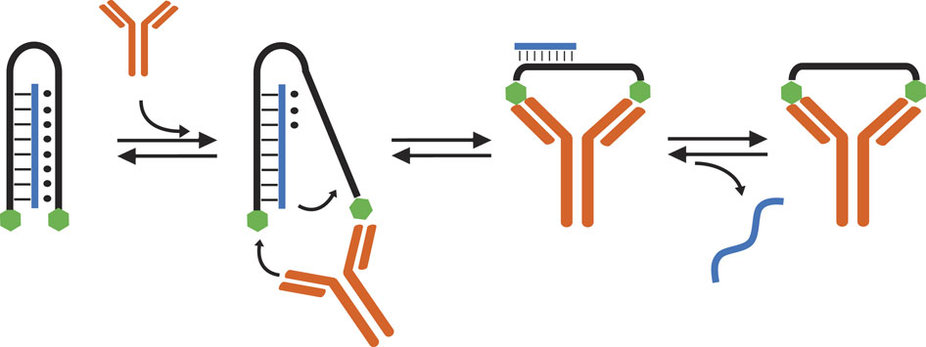A catapult-like microscopic machine made from DNA and enzymes could be used to deliver drug molecules to precise targets inside the body.
The device, whose size is estimated at around a twenty-thousandth of the width of a hair, has been constructed by researchers at the University of Montréal and the University of Rome Tor Vergata. It comprises a length of synthetic DNA that can bind a drug molecule along its length, and terminates in anchoring groups that recognise and bind to the ends of Y-shaped antibody molecules in the blood stream. This DNA strand acts as the elastic in the catapult, while the antibody acts as the handle.

It is only when the anchoring groups at the end of the elastic bind to the specific targets on the antibody that the "elastic" is stretched and the drug molecule released. The team explains their research in a paper in Nature Communications.
"One impressive feature about this molecular slingshot," says Francesco Ricci, Associate Professor of Chemistry at the University of Rome Tor Vergata, "is that it can only be triggered by the specific antibody recognising the anchoring tags of the DNA 'rubber band'. By simply changing these tags, one can thus program the slingshot to release a drug in response to a variety of specific antibodies. Since different antibodies are markers of different diseases, this could become a very specific weapon in the clinician's hands."
"Another great property of our slingshot," added Alexis Vallée-Bélisle, Assistant Professor in the Department of Chemistry at the University of Montreal, "is its high versatility. For example, until now we have demonstrated the working principle of the slingshot using three different trigger antibodies, including an HIV antibody, and employing nucleic acids as model drugs. But thanks to the high programmability of DNA chemistry, one can now design the DNA slingshot to 'shoot' a wide range of therapeutic molecules."
The Montréal and Rome teams are now working on targeting a specific disease and developing appropriate drug to use with the system, which they then plan to test on mice. "We envision that similar molecular slingshots may be used in the near future to deliver drugs to specific locations in the body. This would drastically improve the efficiency of drugs as well as decrease their toxic secondary effects," concludes Ricci.




Nanogenerator consumes CO2 to generate electricity
Nice to see my my views being backed up by no less a figure than Sabine Hossenfelder https://youtu.be/QoJzs4fA4fo